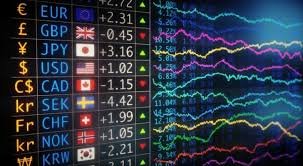
Forex trading, or foreign exchange trading, is a decentralized global market where currencies are traded. It is one of the largest and most liquid financial markets in the world, surpassing even the stock market in volume. In this guide, we will explore the fundamental concepts, strategies, and tips for navigating the Forex market effectively. If you’re looking to start your journey in Forex trading, forex trading explained FX Trading UZ is a valuable resource for beginners and seasoned traders alike.
What is Forex Trading?
Forex trading involves the buying and selling of currency pairs, where one currency is exchanged for another in a simulated market. The goal is to profit from fluctuations in exchange rates between currencies. Unlike other financial markets, the Forex market operates 24 hours a day, five days a week, allowing traders from different time zones to engage in trading at all hours.
Currency Pairs
In Forex trading, currencies are quoted in pairs. The first currency in the pair is known as the base currency, while the second is the quote currency. For example, in the currency pair EUR/USD, the Euro is the base currency and the US Dollar is the quote currency. Traders speculate on whether the base currency will strengthen or weaken against the quote currency.
Currency pairs are generally classified into three categories:
- Major pairs: These involve the most traded currencies, such as EUR/USD, USD/JPY, and GBP/USD.
- Minor pairs: These pairs do not involve the US Dollar but include other major currencies, such as EUR/GBP or AUD/NZD.
- Exotic pairs: These pairs include a major currency paired with a currency from a developing country, such as USD/TRY (Turkish Lira) or EUR/ZAR (South African Rand).
How Forex Trading Works
Forex trading is conducted through brokers who provide platforms for traders to execute their trades. These platforms typically offer various tools for technical analysis, news feeds, and educational resources. Traders can enter positions in the market either through desktop applications or mobile devices, allowing for flexibility and accessibility.

When a trader believes that a currency will strengthen against another, they will purchase that currency pair (go long); conversely, if they believe a currency will weaken, they will sell that pair (go short). The difference between the buying and selling prices is known as the spread, which is a significant factor in determining the overall cost of trading.
Leverage in Forex Trading
One of the defining features of Forex trading is the use of leverage. Leverage allows traders to control larger positions than their actual investment size. For example, with a leverage ratio of 100:1, a trader can control $100,000 with a mere $1,000. While leverage can amplify potential profits, it also increases the risk of significant losses. Therefore, it is essential for traders to use leverage responsibly and to have a solid risk management strategy in place.
Understanding Pips and Lots
In Forex trading, price moves are measured in pips, which stands for “percentage in point.” A pip is typically the fourth decimal place in a currency pair (0.0001). For example, if the EUR/USD pair moves from 1.1000 to 1.1001, it has moved one pip.
Trading in Forex is also done using standard units known as lots. A standard lot represents 100,000 units of the base currency in a currency pair. There are also mini lots (10,000 units) and micro lots (1,000 units), allowing traders to scale their positions to match their account size and risk tolerance.
Technical Analysis vs. Fundamental Analysis
There are two primary methods that traders use to analyze the Forex market: technical analysis and fundamental analysis.

- Technical Analysis: This method involves analyzing historical price data to identify patterns and trends in the market. Traders use various tools such as charts, indicators, and oscillators to make predictions about future price movements.
- Fundamental Analysis: This approach focuses on economic indicators and macroeconomic factors that can influence currency values. Analysts look at factors such as interest rates, inflation, GDP, political stability, and economic policies to gauge the health of a country’s economy and its currency’s strength.
Developing a Trading Strategy
A successful Forex trader needs a well-defined trading strategy. This strategy should include criteria for entering and exiting trades, risk management techniques, and rules for maintaining discipline. Some common trading strategies include:
- Scalping: This strategy involves making rapid trades over short durations, seeking small price movements for profit.
- Day Trading: Day traders enter and exit trades within the same day, aiming to capitalize on intraday price movements.
- Swing Trading: Swing traders hold positions over several days or weeks, capturing price swings in the market.
- Position Trading: This long-term strategy involves holding trades for weeks, months, or even years, relying on fundamental analysis and economic trends.
Risk Management in Forex Trading
Effective risk management is crucial for Forex traders to protect their capital and minimize losses. Here are some essential risk management techniques:
- Set Stop-loss Orders: A stop-loss order automatically closes your trade when the price reaches a certain level, thus limiting potential losses.
- Use Proper Position Sizing: Adjust the size of your trades based on your account size and risk tolerance, ensuring that no single trade can significantly damage your account.
- Diversify Your Portfolio: Avoid putting all your capital into one market or position; diversify to reduce risk exposure.
- Avoid Overtrading: Stick to your trading plan and avoid taking excessive trades based on emotions.
Conclusion
Forex trading offers opportunities for profit, but it also comes with significant risks. Understanding the fundamentals of how the market works, the tools available, and the importance of risk management is essential for anyone looking to trade successfully. As you begin your trading journey, remember to practice, stay disciplined, and continuously educate yourself. With the right approach, Forex trading can be a rewarding venture.
